Paragraph Writing in 1st and 2nd Grade
Just a few months ago we welcomed our first-grade friends and they were able to write a few words and if we were lucky, a complete sentence. How can we help these students in paragraph writing? Since August we have worked oh-so-hard to develop interesting stories, taught our friends with how-to writing, and written letters to our favorite authors.
Then comes the Spring and it’s time to embark on paragraph writing. One of the three main writing strands for 1st grade, our six-year old friends are expected to be able to introduce a topic, give and explain a detail, and then, wrap-up their thinking. In summary, 1st graders should be able to independently write a cohesive paragraph by the end of the year. So, the question is – how do we get our friends there?
Exposing Students to High Quality Paragraphs
Writing inform/explain pieces in writing couples well with our nonfiction text unit in reading. I love pairing these two units because of the nonfiction skills of reading – text features, identifying main ideas, finding details that an author uses to support a point, etc. Allowing students the opportunity to see these skills in action in ‘real’ and authentic writing (ALL YEAR LONG) before it’s ever formally introduced in writing, gives the skills a foundation and a reason.
Immersing Ourselves in Paragraphs
As we begin paragraph writing, we begin reading lots, and lots, and lots of paragraphs. Friends, I mean DOZENS! Instead of a trade-book read aloud during snack, we read about how animals survive in the desert from Read Works, we read about the Bengal tigers from Reading A-Z, and we begin reading many, many titles from National Geographic Kids. As we read, we are talking about what the author wanted us to learn, as well as, ALL about (the main idea) and evidence/examples the author used to ‘prove’ his main idea.
Identifying the Parts of a Paragraph
Structuring our Writing
These gestures are perfect for giving students a tangible way to remember the parts of the paragraph, as well as, offer a cue when I am working with students or students are working with each other.
As a school, we also assign a color to each part of the paragraph (read more about color-coding our writing here). The Main Idea and Wrap-Up Sentences are BOTH red since the concluding sentence relates DIRECTLY back to the main idea and restates it in a different way. Our supporting detail is blue and our example/explanation is green. As we are reading our high-quality paragraphs from ReadWorks, Reading A-Z, National Geographic we always highlight and underline the parts together. This practice generates THE best conversations – How do you know this is an example? Does this detail fit in the paragraph…how do you know? If you were the author what other example would you include? Is it okay for a paragraph to have two examples or details? Why don’t all paragraphs have the same structure?
These really important questions help build some reasoning and flexibility into our writing. Although we know the basic paragraph outline, real authors change and adapt this format to meet their writing needs.
Making Paragraph Writing Hands-On
At this point, we’ll turn paragraph writing hands-on with our paragraph puzzles. Working in teams, students organize 5 strips of paper into a paragraph that makes sense. Every single time, we can nail the title but after that it gets tricky. Learning the nuances between a main idea and a wrap-up sentence takes time. Learning how an example supports a detail (and is not actually the supporting detail) – oh my! Students rotated to all the paragraphs within the hour. The first few were pretty rough. Then, around paragraph 3 everything seems to click as groups are rocking their paragraph organization and have the best conversations with each other about the paragraphs. This year it took us over an hour (some of the time spent in reading and some of the time spent in writing) to finish 6 puzzles, but that was time well invested.
Shared Paragraph Writing
Once we know the parts of the paragraph, can identify paragraph structure in ‘real writing’, and have had experience organizing paragraphs, it’s time to write paragraphs together. This shared writing time is perfect for pulling out our favorite cooperative learning strategies and brainstorming together. Initially, I will provide a main idea and we’ll add the other parts of the paragraph.
Scaffolding Students
Within our shared paragraph writing time, I also introduce our paragraph writing organizers. We have two main organizers (a 1.4 paragraph and a 2.6 paragraph which includes two details each with an example). I do physically show students how to use the organizer to ensure all their ‘parts’ are there and then, transfer the writing to an actual paragraph. Although this transfer from organizer to paragraph seems simple and intuitive, it does take explicit modeling – indenting the main idea, placing the sentences right after one another without skipping lines, etc. Throughout the year, students have these organizers available to them in our Work on Writing tray, so I want them to know how to independently scaffold and produce their writing.
Some of our paragraphs we write on the whiteboard, some on the SMART Board, some on graphic organizers, some on blank writing paper. I do intentionally switch-up the location so students aren’t dependent on one writing material and they know that writing can have MANY different forms. Even with different forms, I am really intentional about color-coding as we write. It’s an easy way to embed structure without having to explicitly talk about it. Plus, it quickly becomes a guessing game of “I know what we are going to color/write next!” and it is easy to self-assess our work.
Launching Independent Paragraph Writing
At this point, students are ready to start independently writing paragraphs in Work on Writing. While we will still practice specific skills and hone our craft during Writer’s Workshop, we are 8 ish days in and ready for a new Daily 5 choice – eek! To ensure that students are successful, we keep the same paragraph organizers in our writing tray – both the 1.4 and the 1.6 organizer reduced to 85% so they fit in our composition notebook. This ensures students can take the just-right organizer for their needs and can glue it into their writing journals so it does not get lost.
While students do have free-choice of their topic during Work on Writing and many choose to write about their reading or what we’re learning in science, some still need prompt support. I have several 1st-grade friendly prompts printed on a binder ring hanging from our writing area. This makes for easy access and students get practice turning a statement or question into a main idea.
Adding-in Research
Before we launch research, we have to know how to gather and organize the information we are learning. Check out this blog post about how we do that!
Building on our penguin and polar bear research unit, this year our 1st grade team also introduced QR Code research/paragraph writing as a choice. Working with a partner, friends grab a QR Code ring and find a picture/question they are interested in learning about. The QR code takes students to a SafeShare video link where they learn LOTS about the topic in 3-5 minutes. Then working together students create and write individual paragraphs using an organizer and then, write their formal paragraphs color-coding their paragraphs. This is a LONG, challenging process It can take up to 3 choices, ~60 minutes) but so worth it. The sense of accomplishment when friends want to share their independent work in between choices is AMAZING.
Student Paragraph Samples
We love writing paragraphs. We feel like ‘real’ writers and we feel oh-so-big. I mean BIG kids write paragraphs and now, we are writing them!!! It’s an exciting transition in 1st grade. At this point (3-4 weeks into paragraph writing, this is what our independent, work-on-writing paragraphs look like.
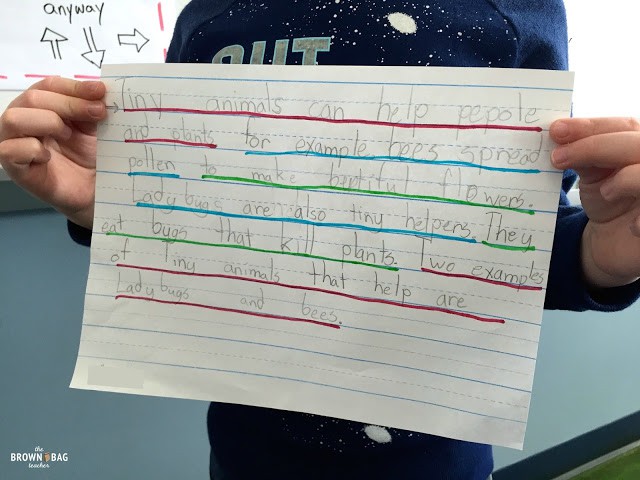
Well friends, this is paragraph writing in 1st grade; it’s such an exciting and motivating time. PLUS, the change in a matter of a few weeks is intense. You can snag the resources shared in this blog post here. In the meantime, I’d love to hear about your go-to resources and ideas for paragraph writing!
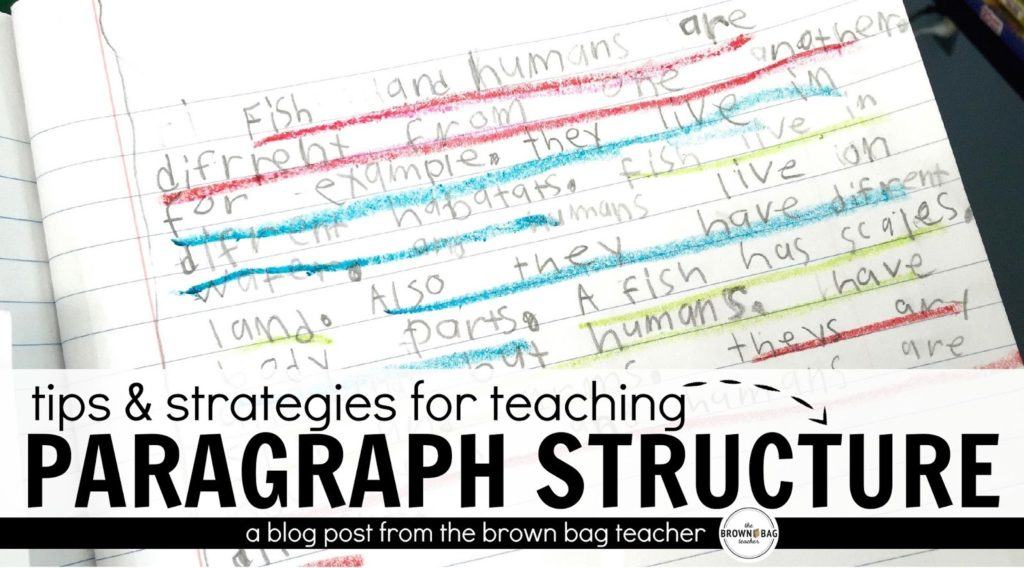
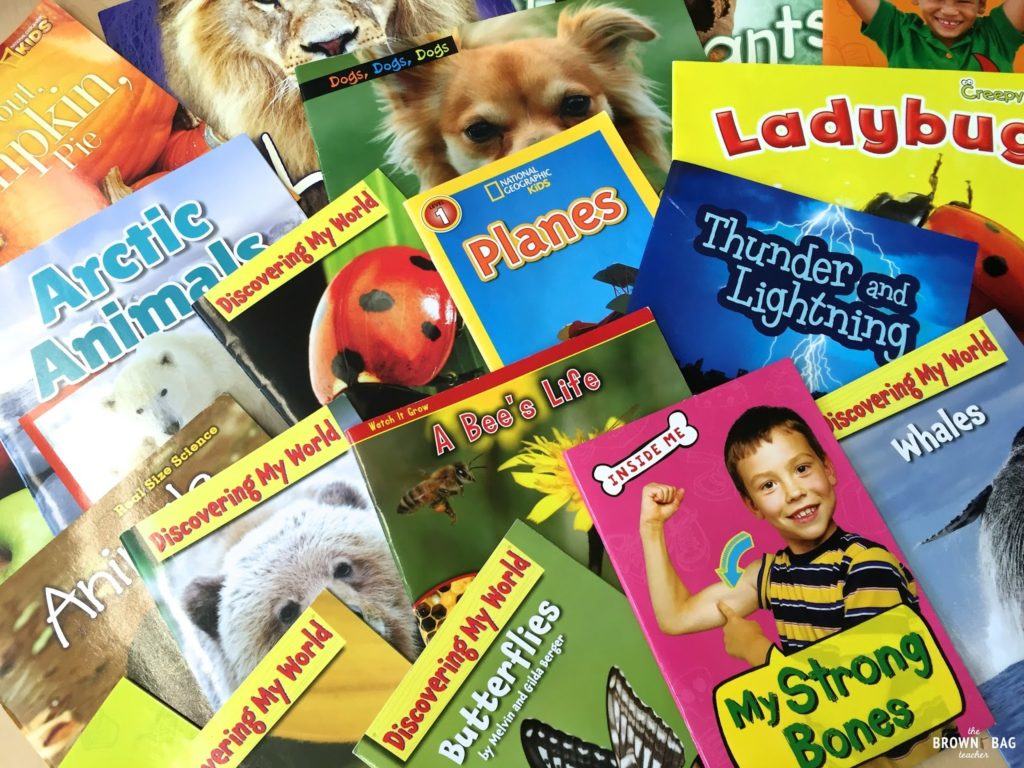


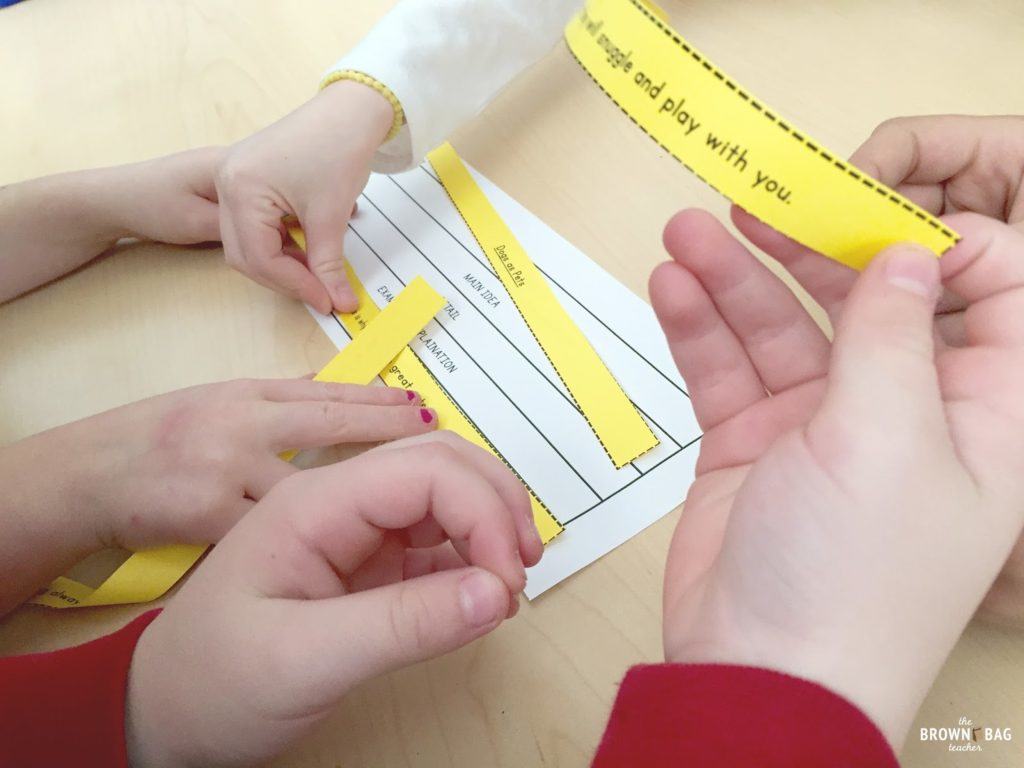
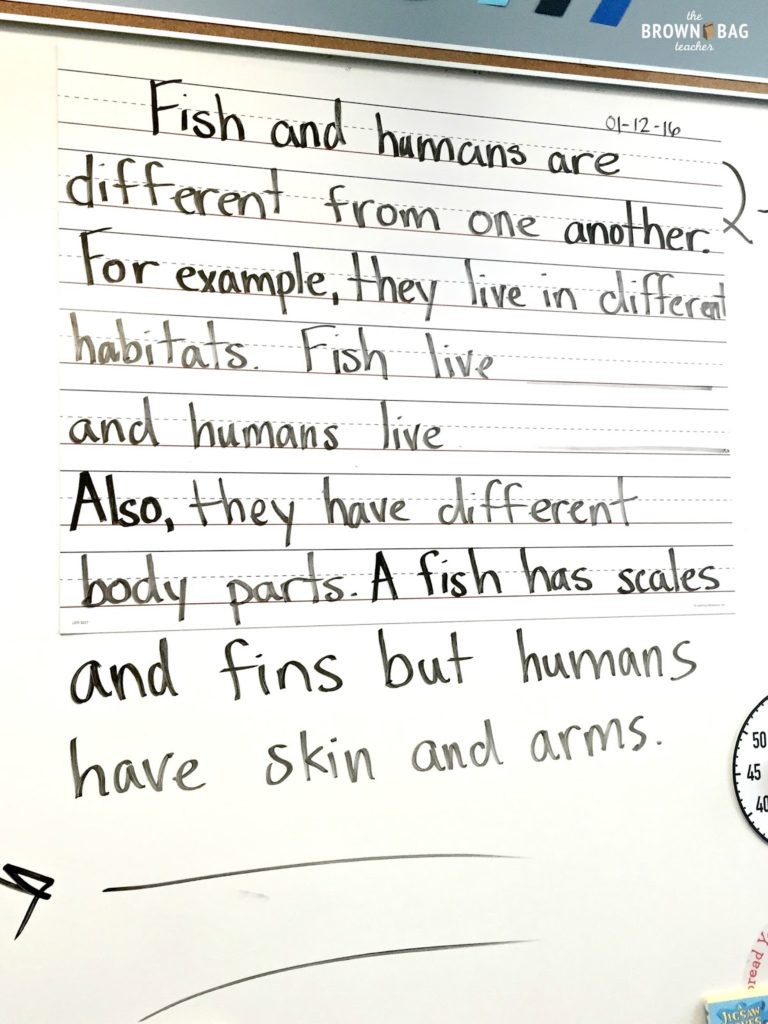
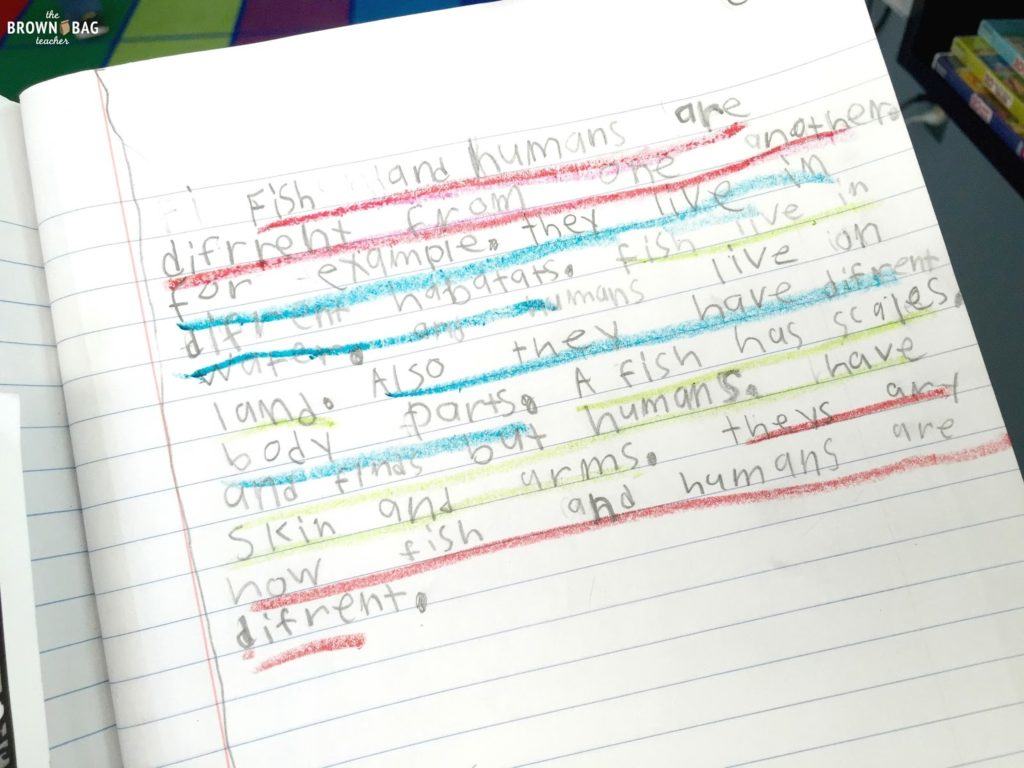
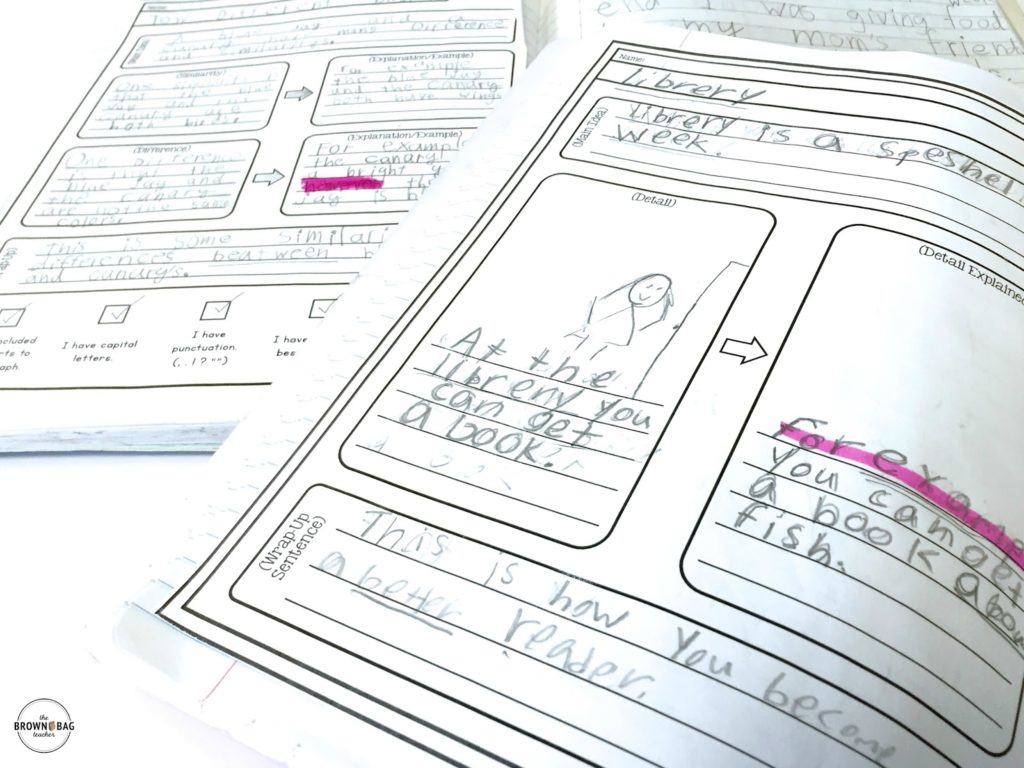

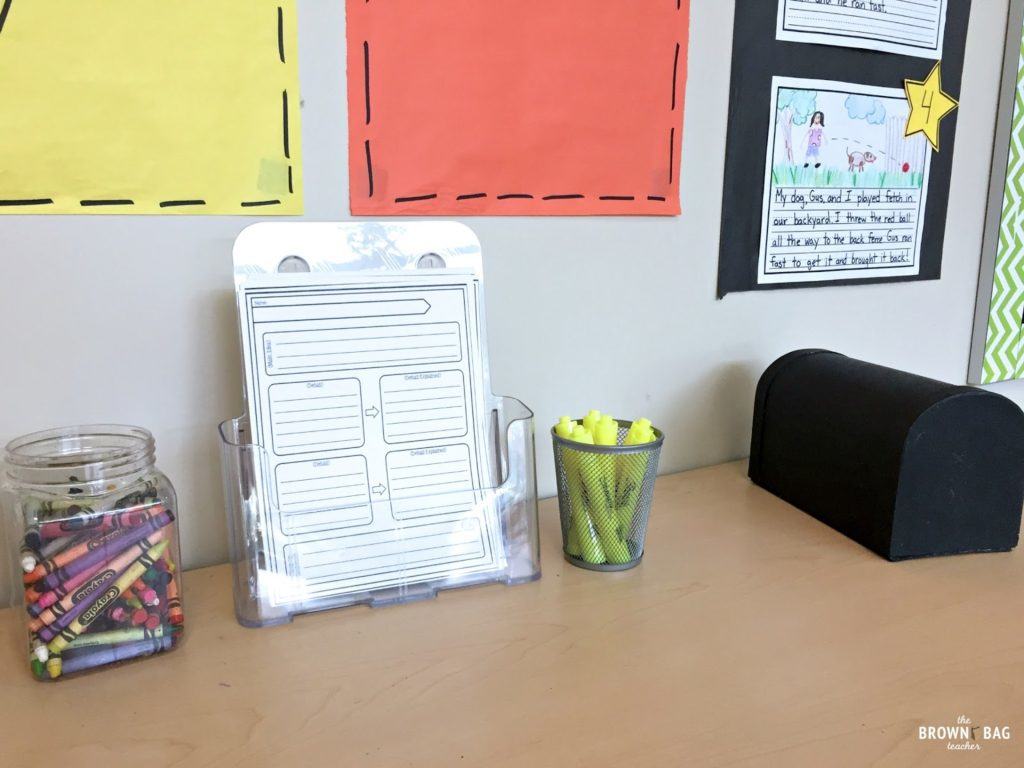
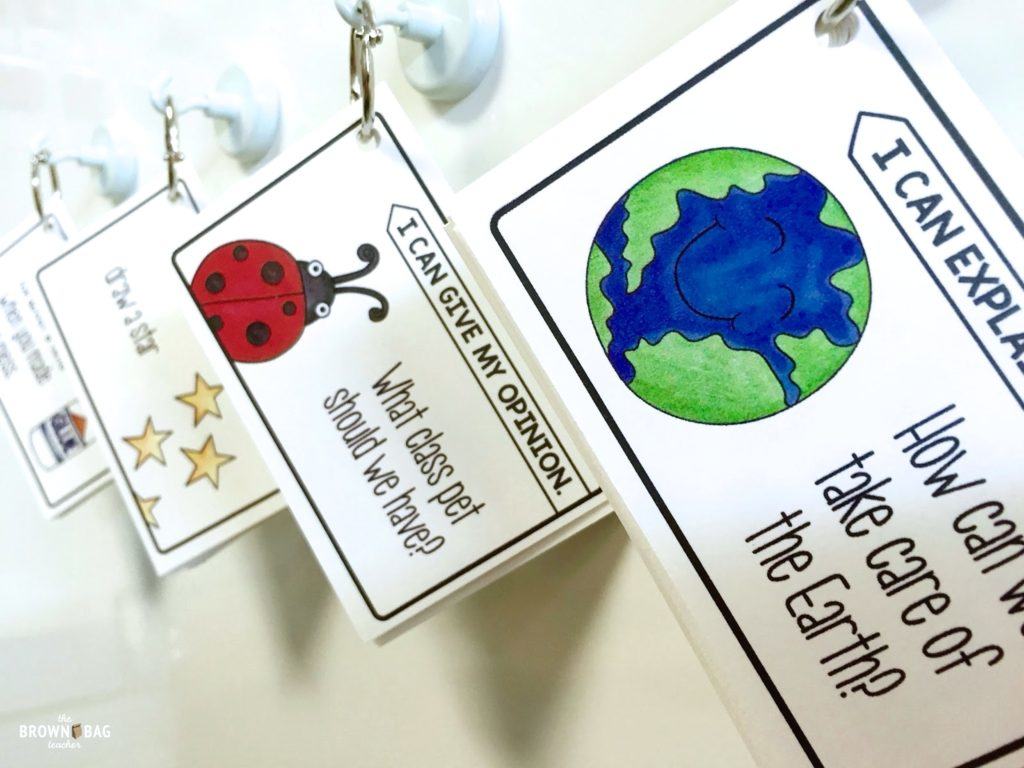
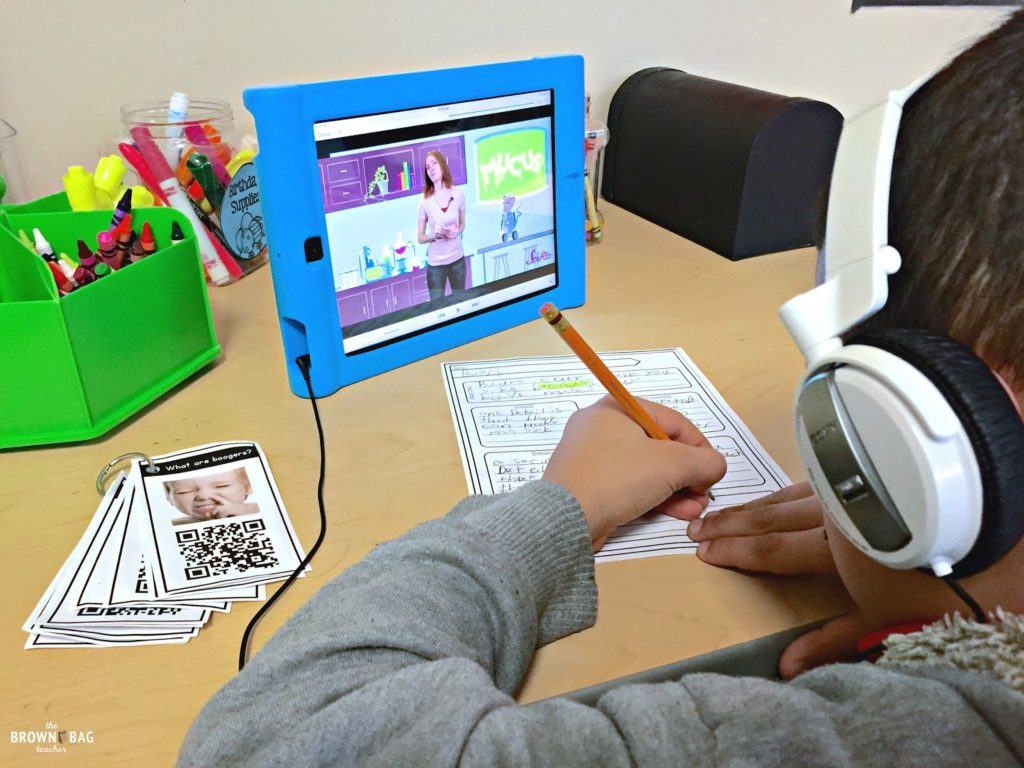
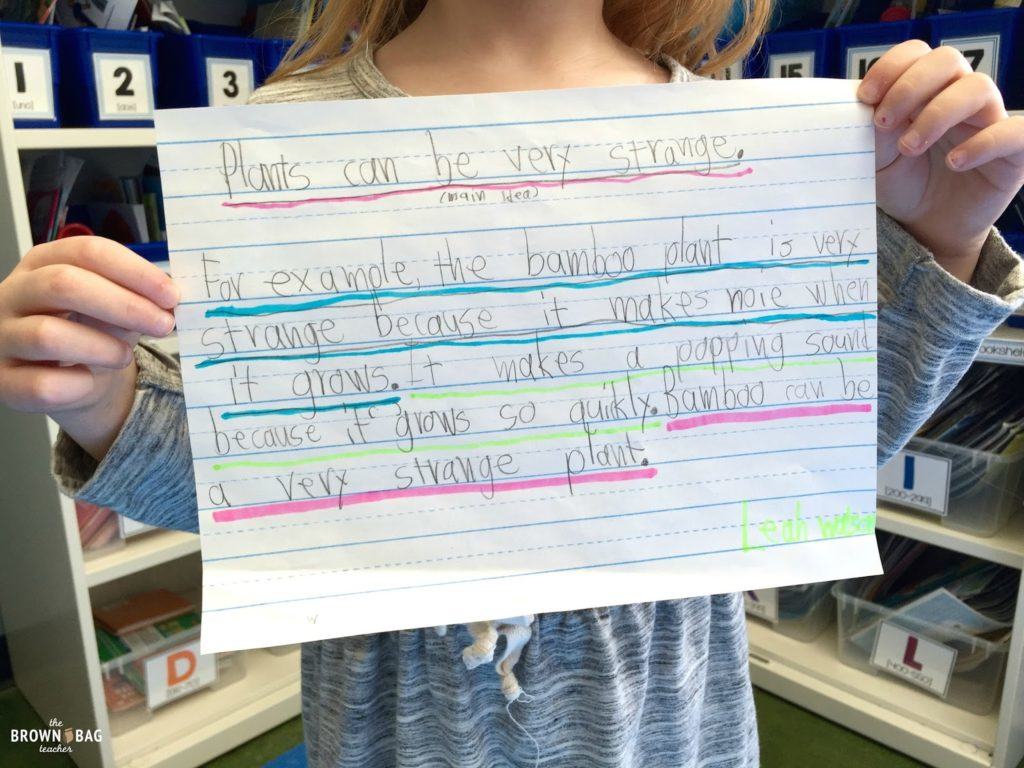
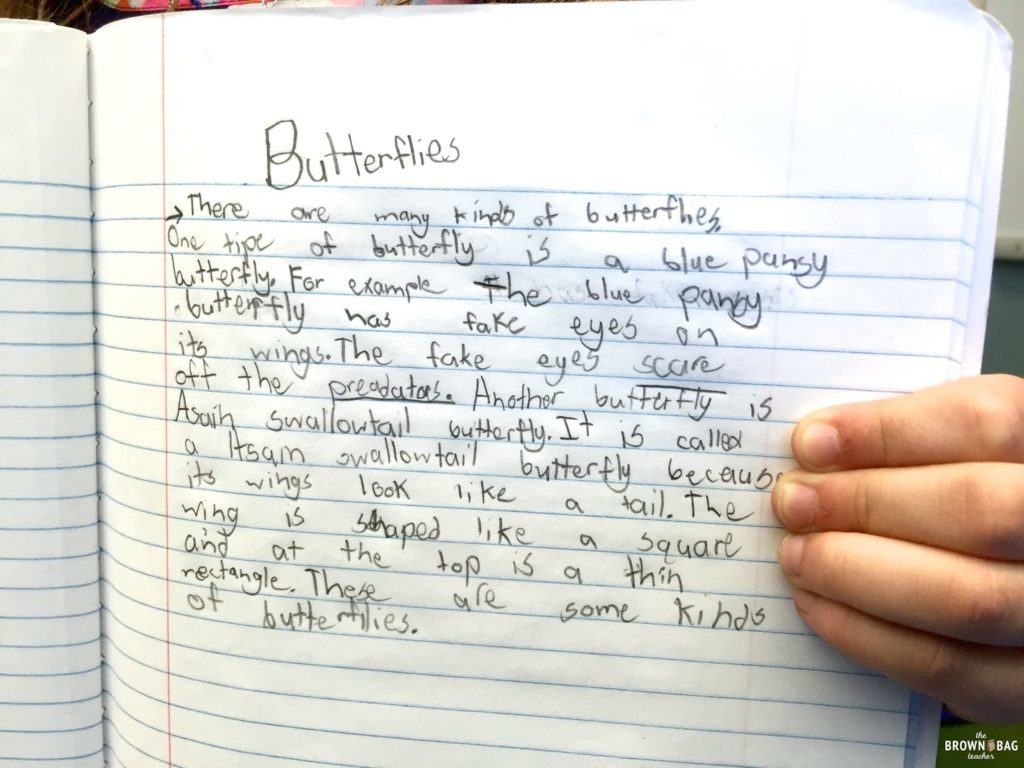
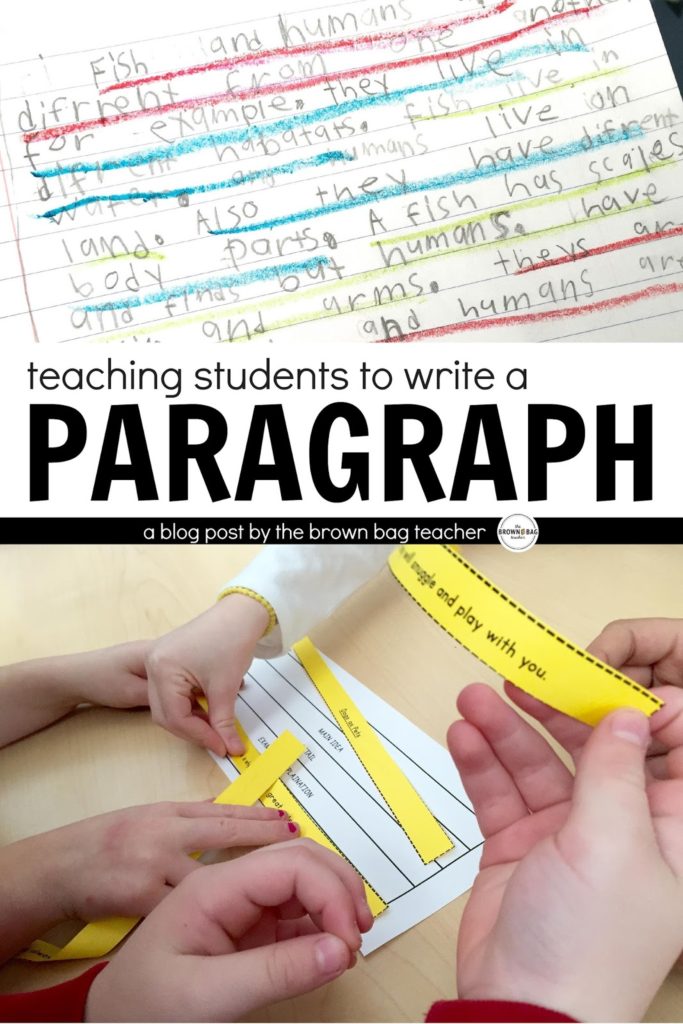

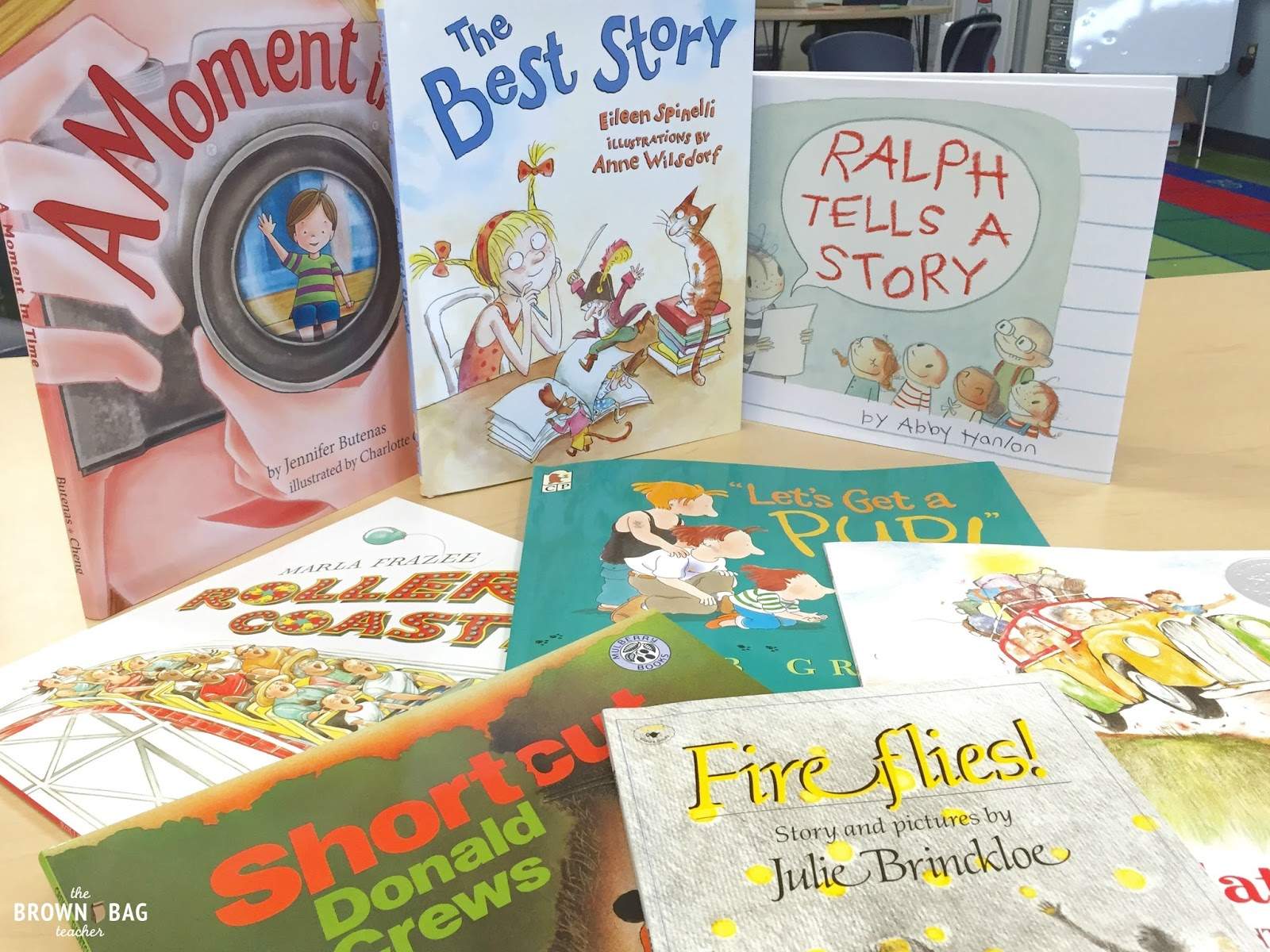
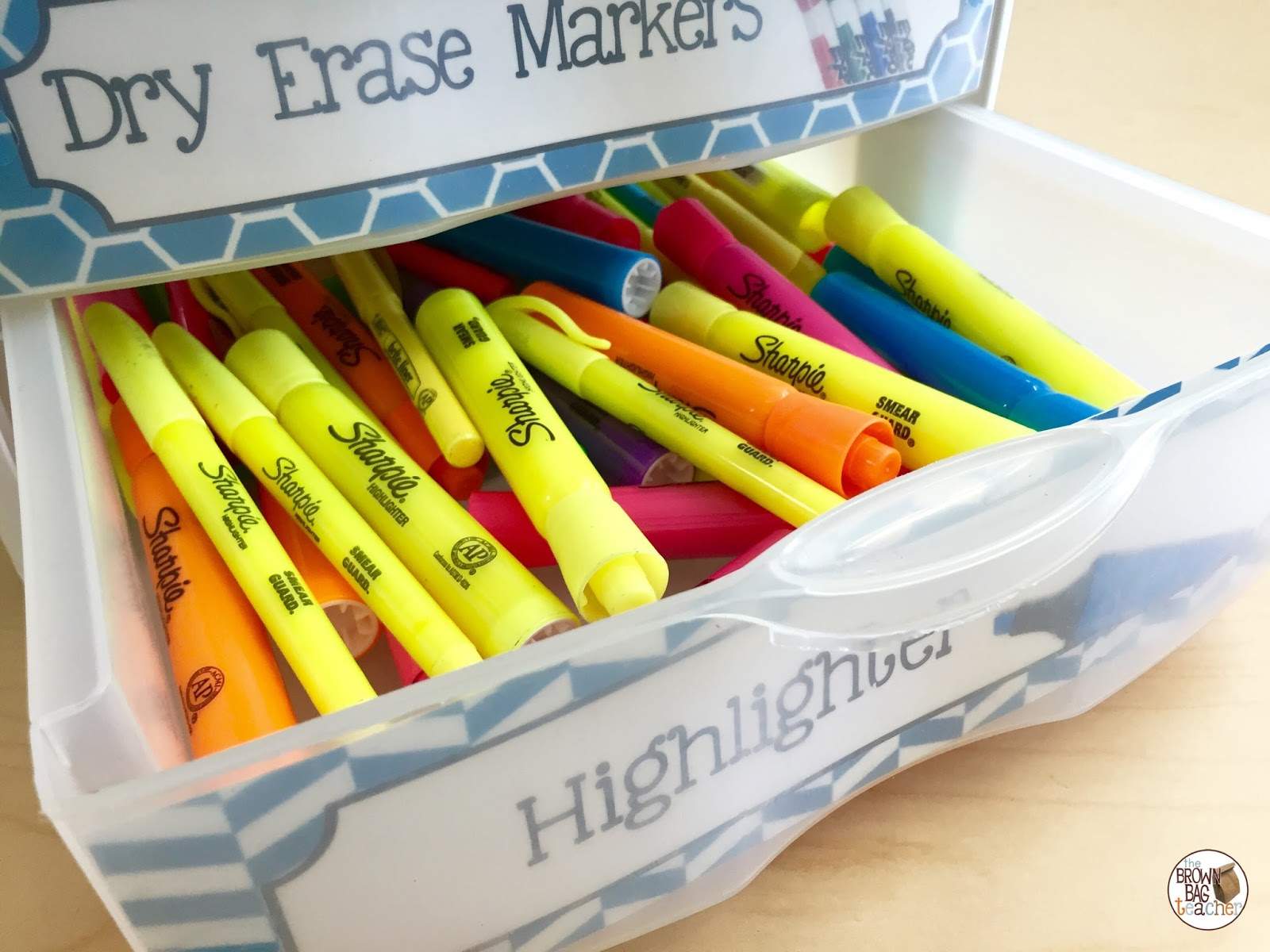
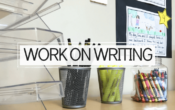
I love seeing how you introduce paragraph writing in first grade! And I love having students color-code their writing!!! It really helps them see all the different parts of their paragraphs!!
Amazing!! Your first graders write better paragraphs than my 3rd graders!! Will you teach my class?? HA HA!! I love getting insight into your teaching. Your writing lessons are awesome! Thank you for sharing. Loved your video, too!
Jamie
Hahaha – thanks so much, Jamie! After teaching 5th grade writing for a year, I realized that writing had to be a HUGE part of my 1st grade classroom. It's quickly become one of my favorite subjects to teach. 🙂
This is an excellent post. I am off to purchase this resource and I'm looking forward to using this with my first graders. Teaching writing is a weakness for me, I think because I lack the confidence in teaching it but you have offered a very clear and concise guideline that will help me feel more confident and in turn, help me to teach my little ones. Thanks so much!
Thanks for sharing! This is a great resource! Did your school district receive any specific training or adopt a particular writing program? I'm asking because I'm curious about where the kinesthetic movements and color-coding ideas came from.
Hi Tiffany! We don't use a particular writing program. Our schools uses the same paragraph structure (1.4, 2.6, 3.8) and our first grade team uses a lot of Whole Brain Teaching. The two kind of molded into this goodness! 🙂
What a great post!! I read your post about using highlighters as well. Do you still color code using highlighters? How do you decide if you will use highlighters or colored pencils?
Hi Sandra! We do both and I really don't care. My students love using highlighters so many times they'll do that. Some also use crayons. I try not to dictate things that don't really matter – ha!
Hi Catherine,
Love your post and video regarding paragraph writing. I too use gestures while teaching. Can you please give me more information about TPR. Is there a TPR book you can recommend?
Thanks.
Karen
Thanks Catherine, it was a marvellous post of para writing! Though I teach middle school, I do take some smaller grades. The gestures and colour-coding are great ways to instill the fundamentals of para writing in younger children. Thanks once again.
Hello! Thank you so much for the ideas and the video! I teach small groups of kids online and I think your ideas would translate well to online lessons. 🙂 Also, as I’ve been searching for 1st grade paragraph ideas, I recognized some of your photos on another website. Maybe you are aware of it already or gave permission, but I wanted to let you know. It was on this WordPress site. (The blog post was not written clearly and seemed a little strange, so I was wary of clicking on any of the links within the post)
https://child.hardysusan.com/1st-grade-paragraph-writing-worksheets
Well this is amazing work! Some of my 7th graders don’t even produce this when asked for a paragraph 🙂
Thank you for the video and the visual and kinesthetic actions for teaching! This will help me with English learners! This will work for all students!
Thanks for sharing such a valuable post. Please keep us updated for future posts.
Your personal statement is more than a document; it’s the voice that introduces you to academic gatekeepers. personal statement writers understands the weight of this narrative and crafts each word with precision, ensuring that your story leaves an indelible mark. Trust in the artistry of Personal Statement Writer to shape your academic destiny.
Explore online mathematics class : Dive into the world of online mathematics classes to sharpen your numerical prowess and enjoy the flexibility of learning at your own pace
Hi. When you want to learn more about enclomiphene citrate, the blog https://valhallavitality.com/blog/where-to-buy-enclomiphene-citrate is the place where you will find all the information you need. I have learned a lot about the properties and effects of Enclomiphene Citrate on the body, thanks to which my knowledge in this area has deepened considerably.
Hi! I recently needed help writing my dissertation thesis. It was causing me a lot of stress, so I decided to contact the Write my thesis service https://essayhub.com/write-my-thesis . This service impressed me from the very first moment. After all, its quality of service is top notch. The authors listened carefully to my requirements and started writing the paper. The work was written with clarity and structure, and did not contain plagiarism.
Hi! I recently needed help writing my dissertation thesis. It was causing me a lot of stress, so I decided to contact the Write my thesis service https://essayhub.com/write-my-thesis . This service impressed me from the very first moment. After all, its quality of service is top notch. The authors listened carefully to my requirements and started writing the paper. The work was written with clarity and structure, and did not contain plagiarism.
Thanks for sharing such valuable information.
pgดีที่สุดเกมออนไลน์ PG SLOT สล็อตบนโทรศัพท์เคลื่อนที่ แบบใหม่ตอนนี้ ของโลก สมัครเล่น SLOT วันนี้รับโบนัส แรกเข้า 100% ในทันทีทันใด โบนัส 50% สำหรับสมาชิกใหม่
Sohni Saiban offers luxurious apartments in Scheme 33, Karachi, blending affordability with a chic lifestyle. Enjoy amenities like a modern gym, a dedicated play area for kids, 24/7 surveillance for safety, and standby generators for uninterrupted power supply.
Looking for top-notch Business Assignment Help in the USA? Look no further! Our team of expert tutors specializes in providing comprehensive assistance with business assignments, ensuring that you receive high-quality solutions tailored to your specific needs. Whether you’re struggling with case studies, market analysis, or financial projections, we’ve got you covered. With our assistance, you can excel in your business studies and achieve academic success. We offer timely delivery, plagiarism-free work, and affordable prices to ensure your satisfaction.